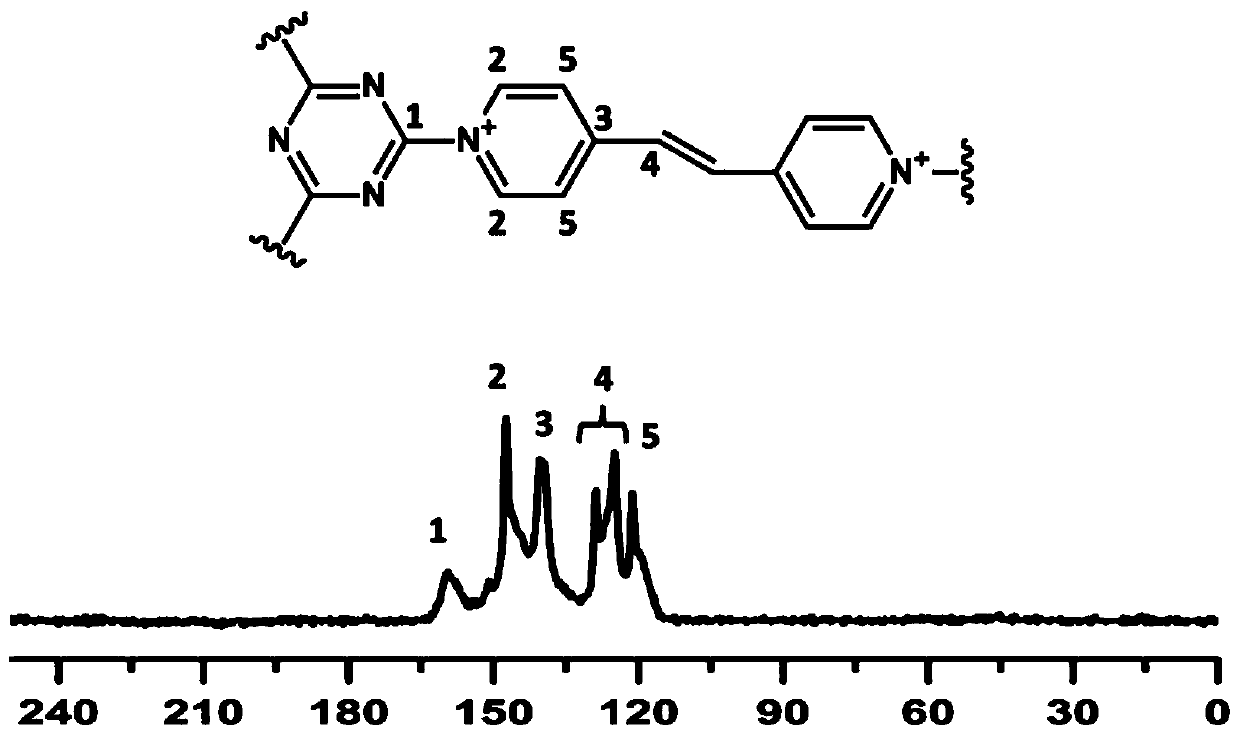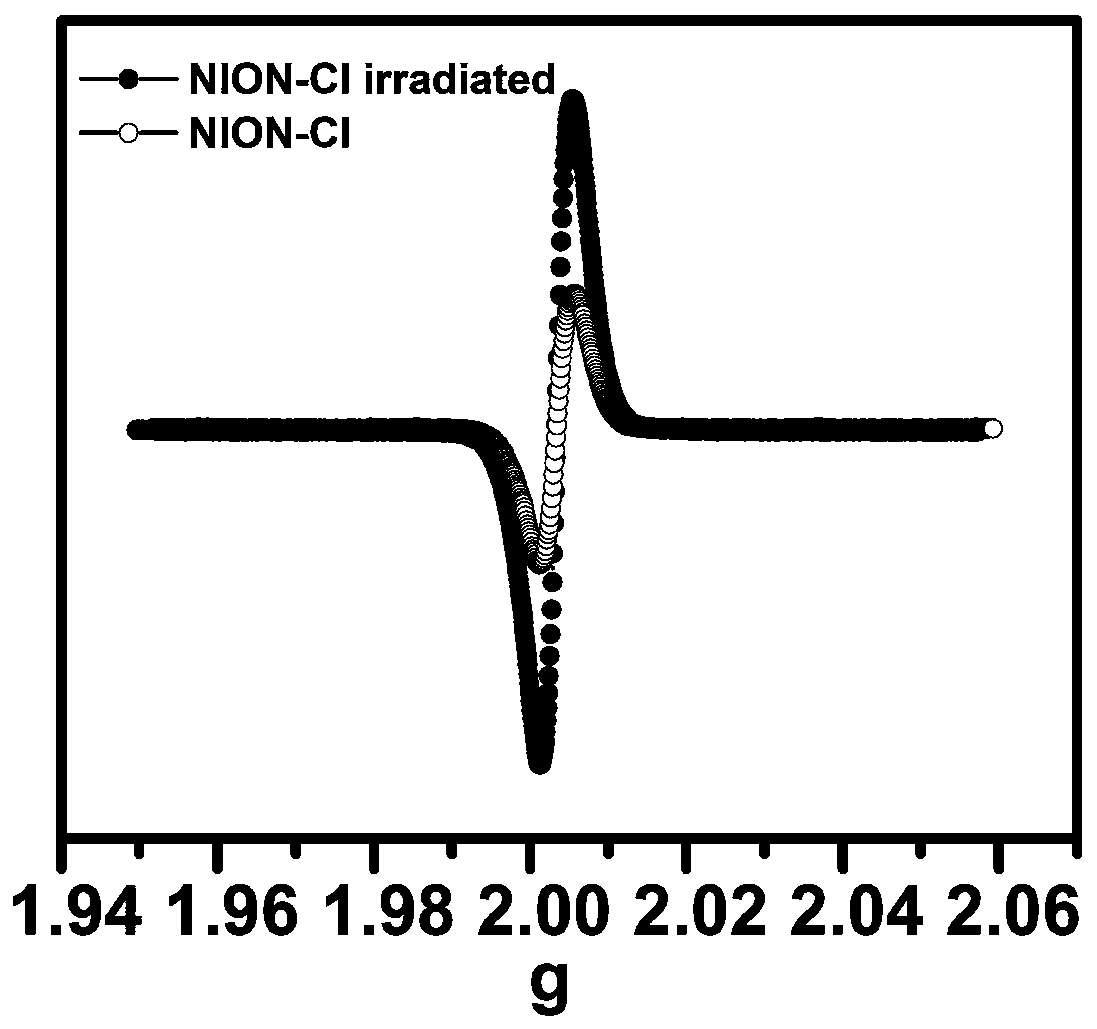An ionized nanoporous organic network polymer and its preparation method and application
An organic network and ionization technology, applied in the field of nanomaterials, can solve the problems of inability to achieve multiple stimulus responses, single response, etc., and achieve the effect of solving single stimulus response
- Summary
- Abstract
- Description
- Claims
- Application Information
AI Technical Summary
Problems solved by technology
Method used
Image
Examples
preparation example Construction
[0028] The present invention provides a method for preparing ionized nanoporous organic network polymer described in the above technical solution, comprising the following steps:
[0029] 1,2-bis(4-pyridyl)ethylene and cyanuric chloride are subjected to a cross-linking reaction to obtain an ionized nanoscale porous organic network polymer; the 1,2-bis(4-pyridyl)ethylene and tris The molar ratio of polycyanogen chloride is 1.35-1.55:1.
[0030] In the invention, 1,2-bis(4-pyridyl)ethylene and cyanuric chloride are cross-linked. In the present invention, the molar ratio of 1,2-bis(4-pyridyl)ethylene to cyanuric chloride is preferably 1.35-1.55:1, more preferably 1.4-1.5:1, more preferably 1.45:1 .
[0031] In the present invention, the crosslinking reaction is preferably carried out in an organic solvent, and the organic solvent preferably includes diethyl ether and / or ethyl acetate. The present invention preferably prepares 1,2-bis(4-pyridyl)ethylene and cyanuric chloride re...
Embodiment 1
[0039]Using 1,2-bis(4-pyridyl)ethylene and cyanuric chloride as the main starting materials and ethyl acetate as the solvent to prepare ionized nanoporous organic network polymer: 1.138g of cyanuric chloride was dissolved in 30mL Prepare solution A in ethyl acetate; dissolve 1.638g of 1,2-bis(4-pyridyl)ethylene in 50mL of ethyl acetate to prepare solution B. Solution A was added dropwise into solution B at a stirring speed of 400 rpm. Then, the temperature of the mixed solution was raised to 100° C., and reacted under this condition for 48 hours. After the reaction was over, the precipitate was obtained by filtration. The precipitate was washed in 50 mL of ethyl acetate, filtered, and the above washing was repeated 3 times. The product was then dried in a vacuum oven to obtain a brown ionized nanoporous organic network polymer with a yield of 91%.
[0040] The ionized nanoporous organic network polymer that embodiment 1 obtains is carried out solid carbon NMR spectrum test,...
Embodiment 2
[0042] Using 1,2-bis(4-pyridyl)ethylene and cyanuric chloride as the main starting materials and ethyl acetate as the solvent to prepare ionized nanoporous organic network polymer: 1.138g of cyanuric chloride was dissolved in 30mL Prepare solution A in ethyl acetate; dissolve 1.2 g of 1,2-bis(4-pyridyl)ethylene in 50 mL of ethyl acetate to prepare solution B. Solution A was added dropwise into solution B at a stirring speed of 400 rpm. Then, the temperature of the mixed solution was raised to 100° C., and reacted under this condition for 48 hours. After the reaction was over, the precipitate was obtained by filtration. The precipitate was washed in 50 mL of ethyl acetate, filtered, and the above washing was repeated 3 times. Then the product is dried in a vacuum oven to obtain a brown ionized nanoporous organic network polymer, and the yield reaches more than 90%.
[0043] Performance Testing
[0044] photoresponsiveness
[0045] Using the polymer prepared in Example 1 as...
PUM
 Login to View More
Login to View More Abstract
Description
Claims
Application Information
 Login to View More
Login to View More - R&D
- Intellectual Property
- Life Sciences
- Materials
- Tech Scout
- Unparalleled Data Quality
- Higher Quality Content
- 60% Fewer Hallucinations
Browse by: Latest US Patents, China's latest patents, Technical Efficacy Thesaurus, Application Domain, Technology Topic, Popular Technical Reports.
© 2025 PatSnap. All rights reserved.Legal|Privacy policy|Modern Slavery Act Transparency Statement|Sitemap|About US| Contact US: help@patsnap.com



